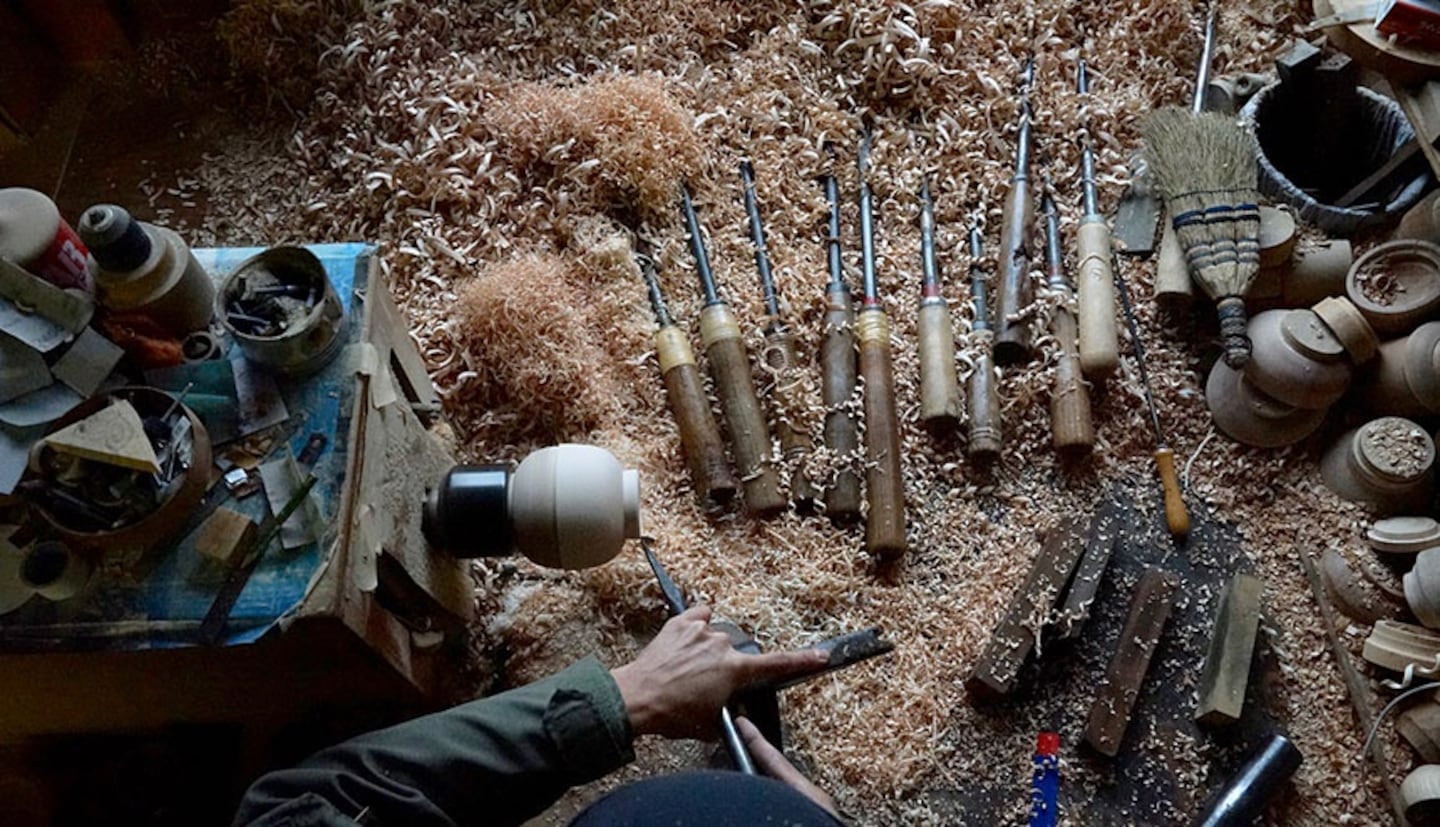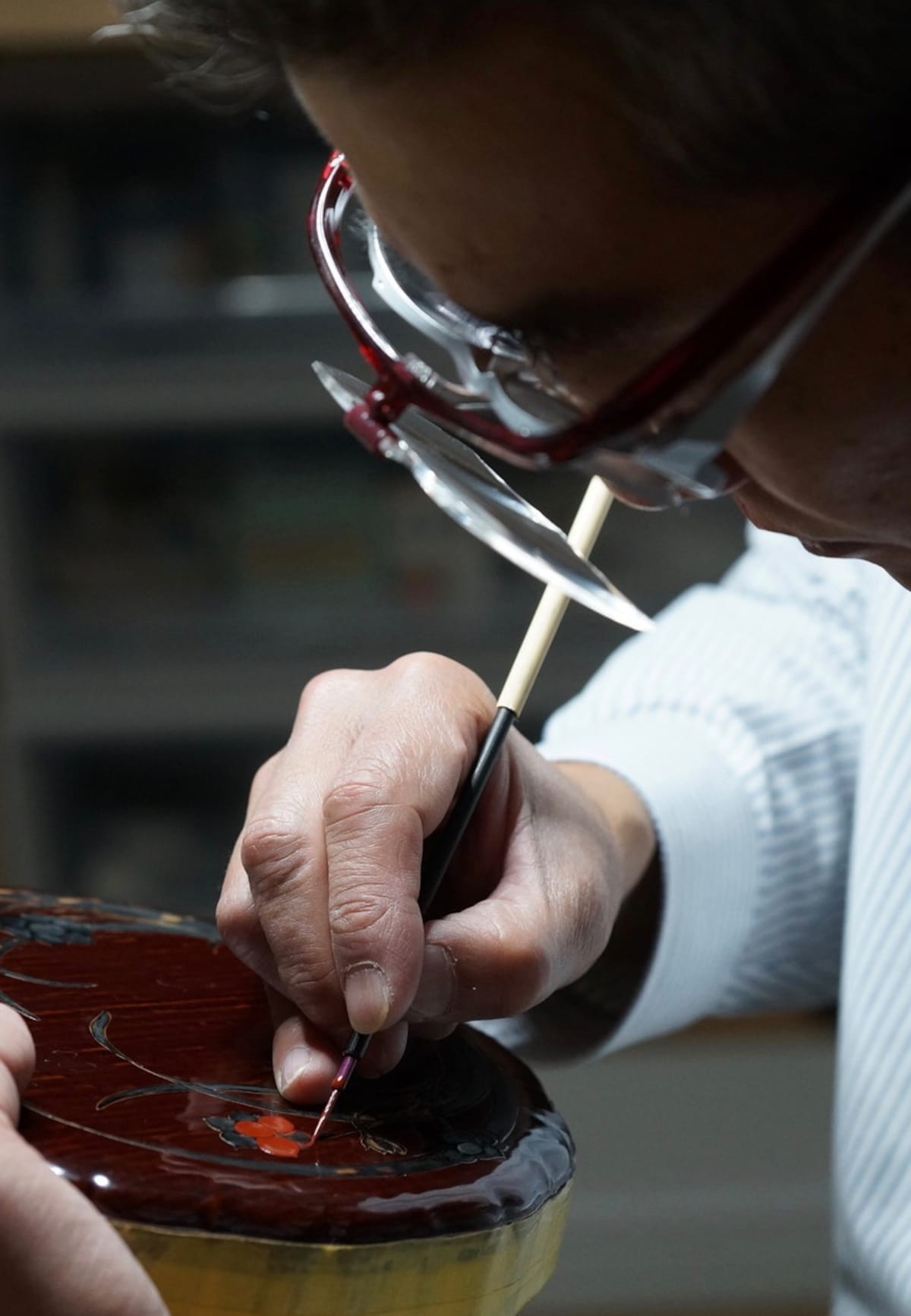2 Modern Masters of Woodwork & Lacquer
The artisans Takehito Nakajima and Mushu Yamazaki are heirs to the legacy of woodworking and lacquerware in Yamanaka, Ishikawa Prefecture, a region with some 400 years of lacquerware tradition.
By Local Creators' MarketTakehito Nakajima
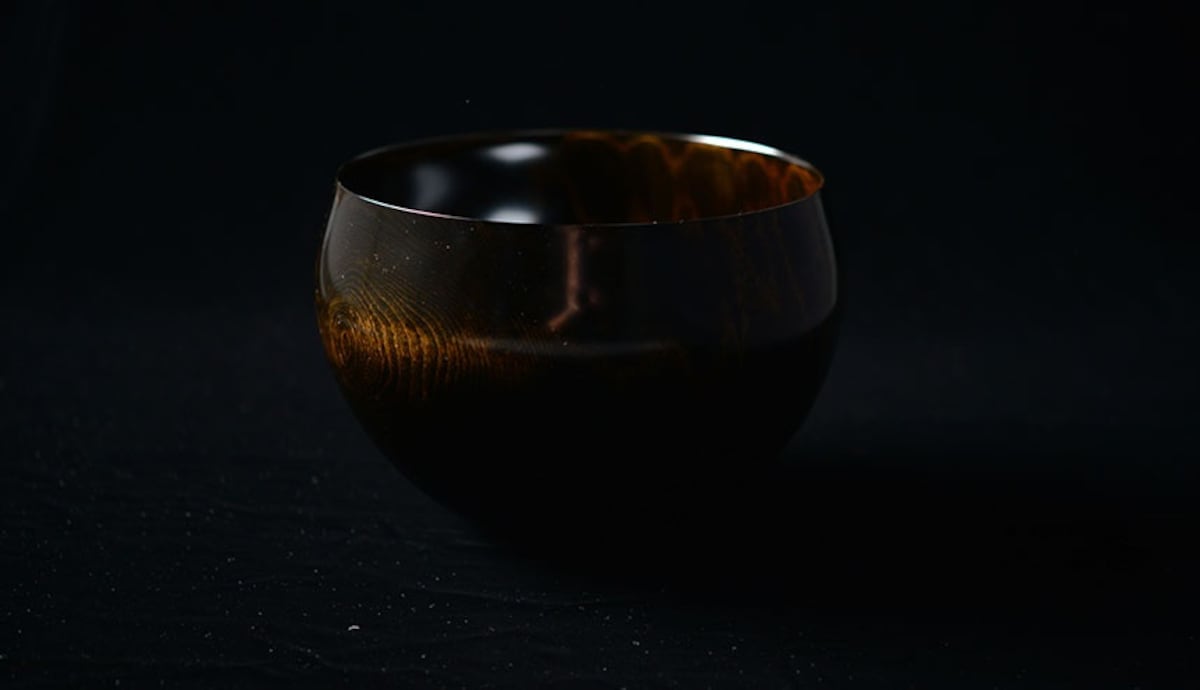
http://local-creators-market.com/kaga/
Nakajima is one of the top woodturners in Japan: He works with entirely with tools he has made himself, and does lacquering as well. In Yamanaka, no clamps or other metal fittings are used to hold wood in the electric lathe—the piece is simply set into a wooden frame that protects it from scratches or other damage. This makes it easy to change the turning direction at any moment so that an entire bowl can be shaped in just a few minutes.
Once the lathing is finished, the piece can be quickly removed and the next one set in place. Nakajima reports that a turner from overseas took one look at his setup and remarked, “That’s crazy! Doesn’t it scare you to work that way?” In fact, he explains, it’s a clever way to bring out the inherent suppleness of the wood.
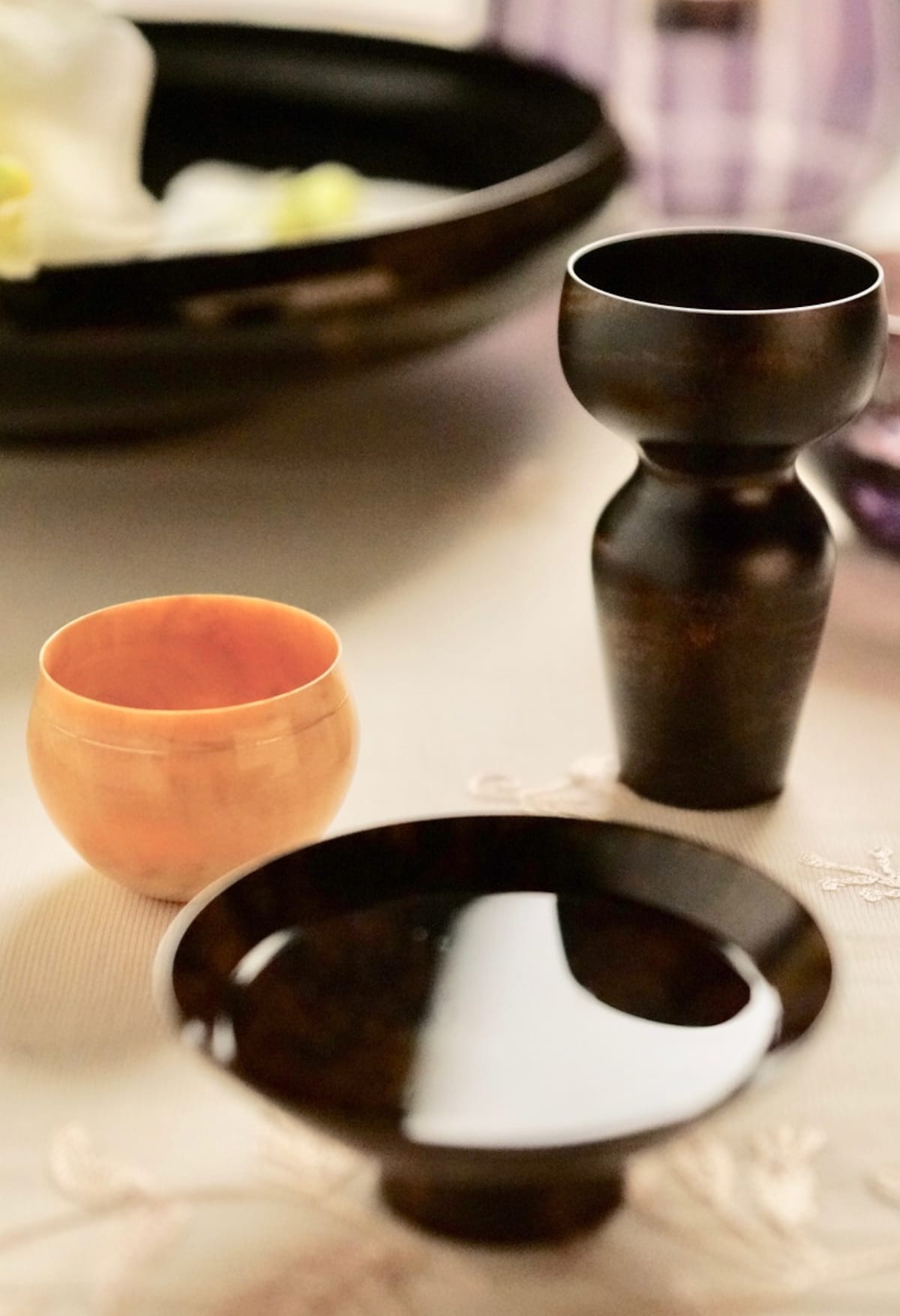
Everything Nakajima makes is magnificent, but his sake cups have special appeal. As their design is carefully considered right down to the texture and touch of the piece on one’s lips, these works of art are a sublime way to savor sake. Nakajima’s mastery is evident in the feather-lightness of his vessels as well as their ultra-thin walls. His recent works feature translucent lacquer with a gloss of marble, a new form of expression.
Mushu Yamazaki
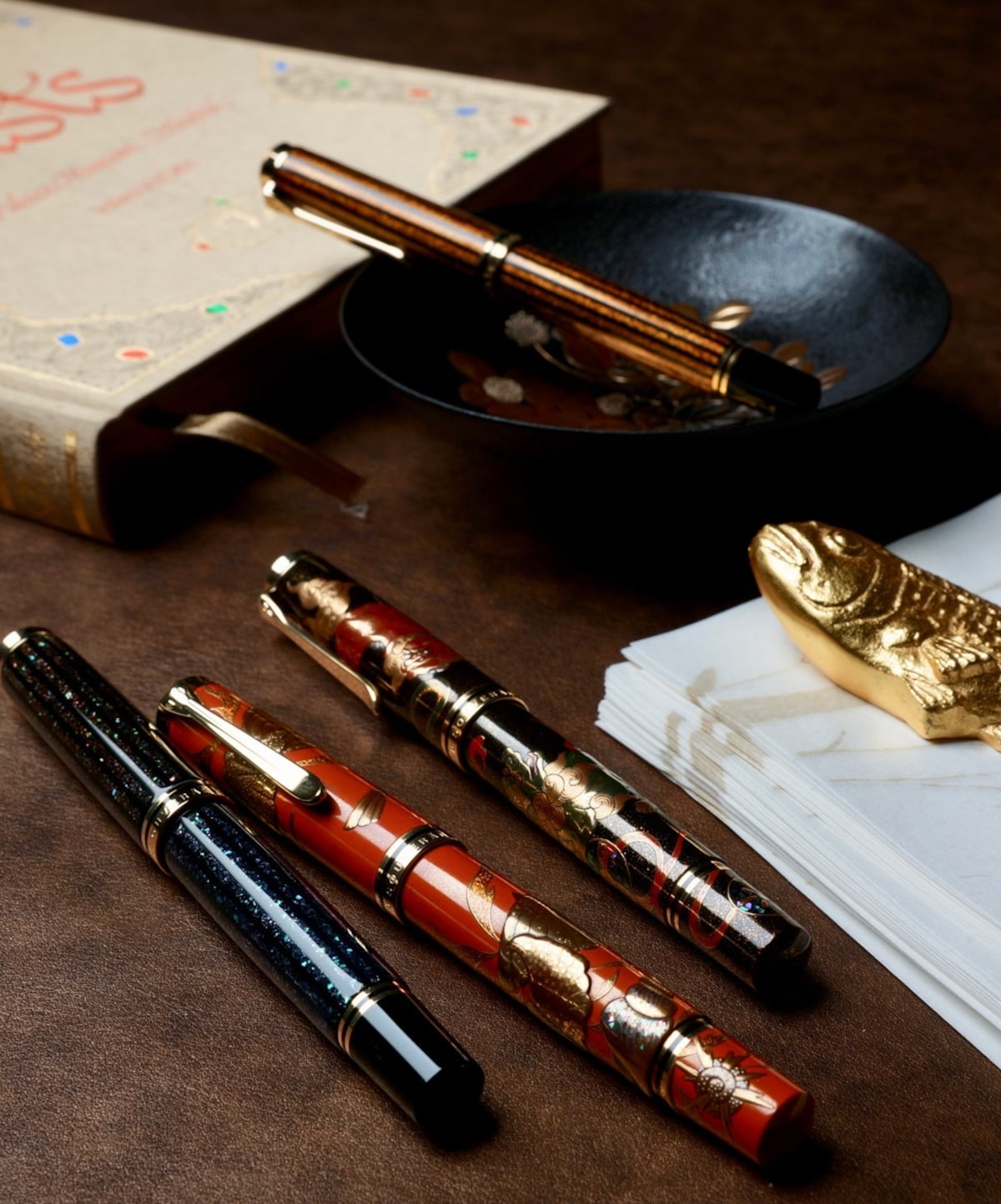
Yamazaki, whose works are sought after by collectors the world over, is, equally, one of the top lacquer painters in the country.
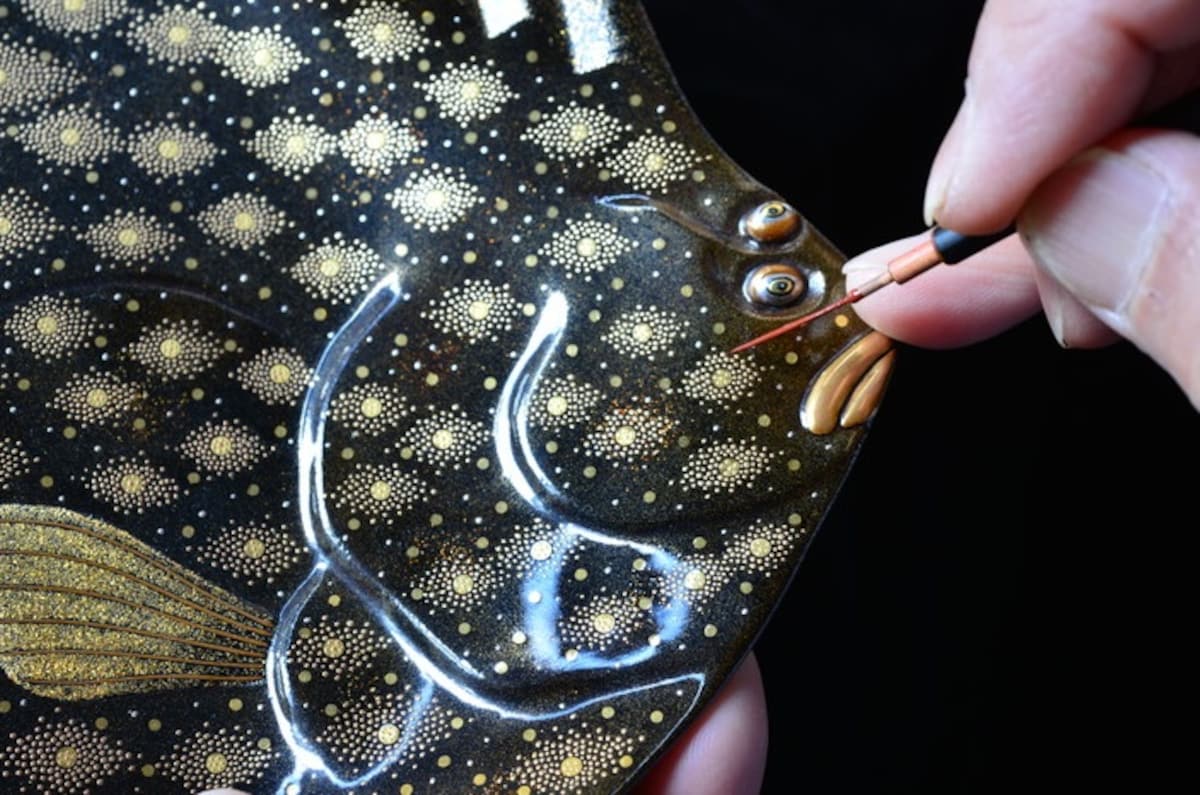
In the decorative art form of maki-e lacquer painting, designs are built up three-dimensionally, often sprinkled with gold or silver powder. Beyond artistic talent, patience and an abiding affection for each piece are requisite. As only the slightest bit of lacquer can be applied before it is set to dry and the next coat begun, the process is long and labor-intensive.
Yamazaki takes on restoration projects, too, preserving masterpieces and other antiques in exquisite form for future generations. His painstaking care, extending even to parts that are hidden, can at times only be confirmed with a magnifying glass. It is no exaggeration to place his trailblazing work in maki-e in league with that of the great Edo Period master Shibata Zeshin (1807–1891).


